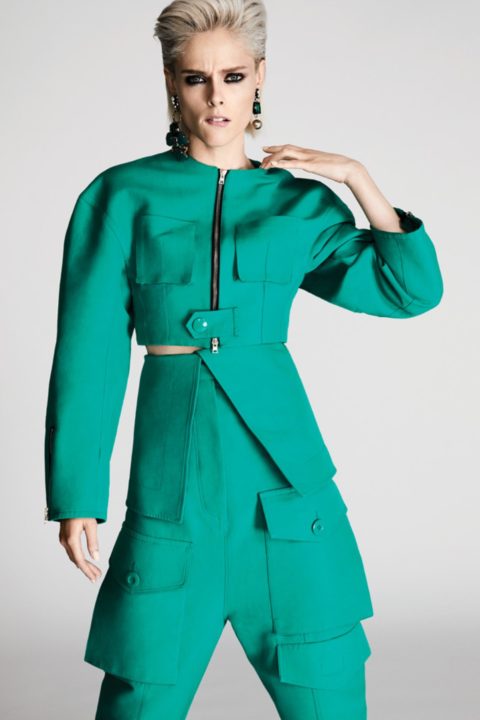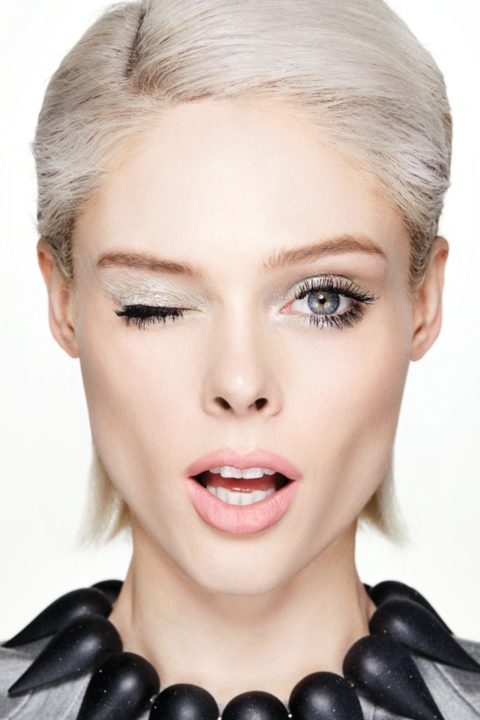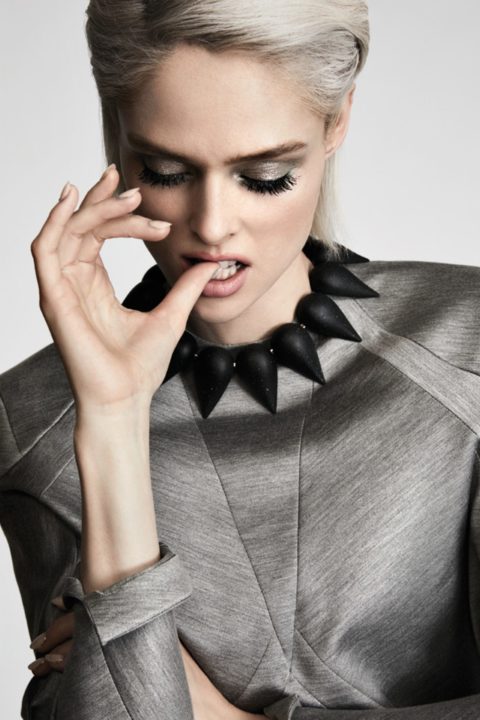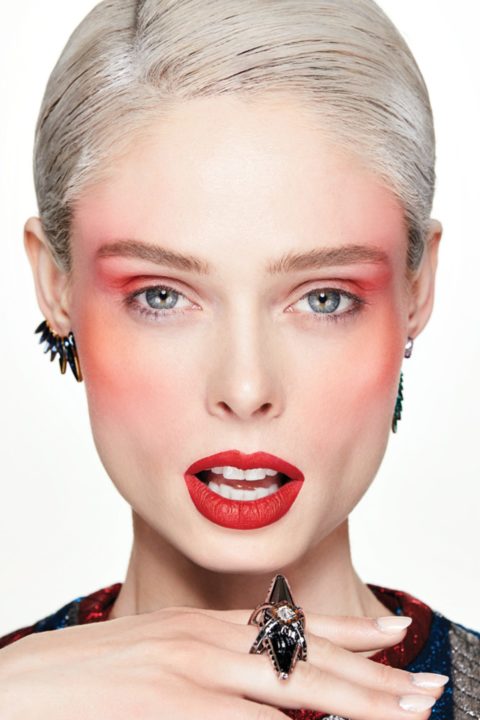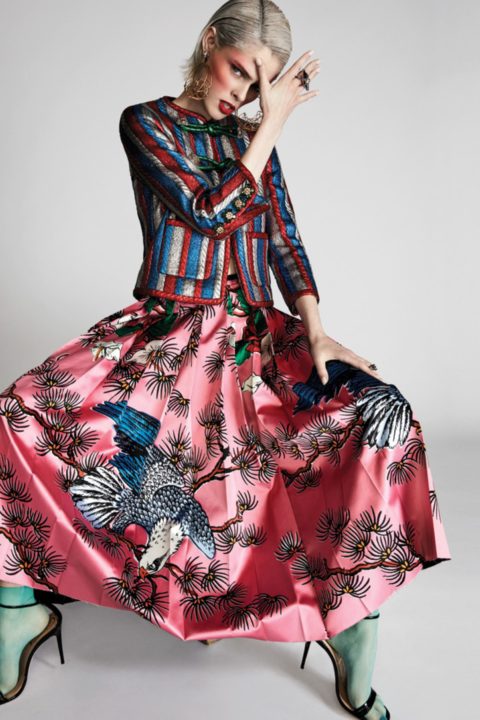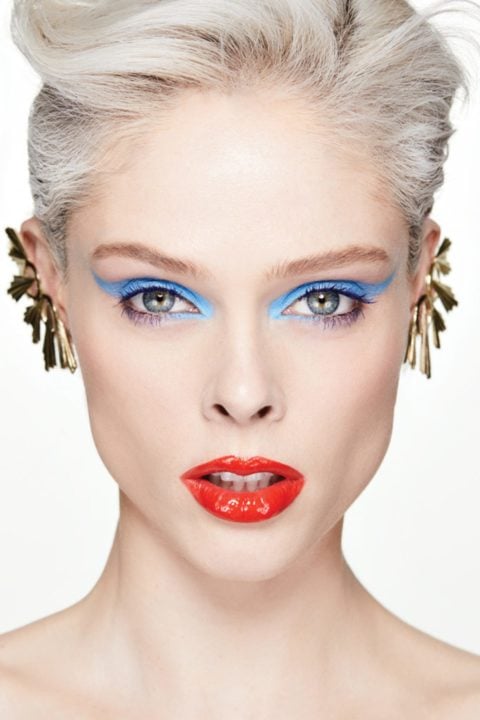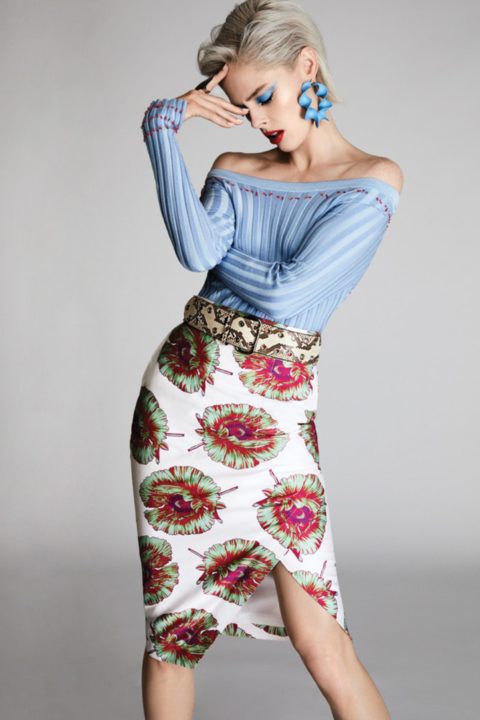FASHION Magazine April 2017 Cover: Coco Rocha
Coco Rocha was an early adopter of all things social. She brings a dose of reality to the filtered online world.
Within 48 hours of Coco Rocha posting a 15-second video of herself posing for our live cover shoot, it had garnered 350,000+ views from her 1.1 million Instagram followers. It’s a simple clip of Rocha morphing from one pose to the next, until her earring drops and she catches it while continuing to work her angles. She called it her “#jedicatch.” “It was a silly little moment, but it got a lot of attention,” Rocha recounts a few days later. “It was pretty surprising.”
It’s not the only time a seemingly insignificant moment in this top model’s life has caught the attention of her followers. In fact, the very first time was back in January 2009, when she posted an image of a bird she’d photographed in Australia on her first blog account, Ohsococo (1.0). Today she and her husband/manager, James Conran, co-manage eight social media platforms with a combined following of 17 million, but back then she was one of the first models to embrace blogging. “There was nothing special about the bird photo; it was meant for friends and family,” says Rocha. “But when I got so many reactions and comments from followers, I realized ‘Hey, there’s something here; I’m not sure what, exactly, but people are interested in my life.’”
At the time, Rocha was taking a few months off from fashion. She had been travelling the globe for the past two years doing campaigns and photo shoots and wanted to get as far away from the fashion capitals as she could. Looking back, Rocha says the response to the post emboldened her to embrace this “new thing called social media.” It also signalled a shift in the power structure in the modelling world. “All of a sudden, readers and fans were letting the major brands and magazines know who their favourite models were and who they wanted to see in images and on runways,” she says.
“The fashion industry was supposed to be a fantasy world that was unattainable.”
Rocha continued to chronicle her experiences online, becoming one of the first models to have more than one million followers on Google+. Today, in addition to her considerable Instagram following, she has 1.57+ million followers on Twitter and six million on the Chinese platform Sina Weibo. Although today it’s expected that models embrace social media, that wasn’t the situation for Rocha in the beginning. “At that time, everything was hush-hush,” she explains. “The fashion industry was supposed to be a fantasy world that was unattainable and aspirational. And the model was part of that. You wouldn’t really know anything about her or her personality, and here I was trying to change that. It’s funny that some of the same people who told me I was ‘ruining the mystique’ at the time are now posting incessantly about what they ate for breakfast.”
What Rocha also discovered was that people were not only interested in her life; they wanted to hear her opinions on the industry from an insider’s perspective. In February 2010, she posted a blog on her Tumblr account in response to the critical comments that had been made about her size in The New York Times and the New York Daily News. She wrote: “I’m a 21 year old model, 6 inches taller and 10 sizes smaller than the average American woman. Yet in another parallel universe I’m considered ‘fat’…. This was the subject of major discussion this week and the story that was spun was: ‘Coco Rocha is too fat for the runway.’ Is that the case? No. I am still used and in demand as a model. In fact I find myself busier than ever….”
She went on to criticize the incongruencies between deploring the employment of children in sweatshops and the addictiveness of cigarettes yet encouraging young women to go to extremes to achieve a certain weight in the fashion world. She said designers, stylists or agents who push children to take measures that lead to anorexia or other health problems are ignoring their “moral conscience in favor of the art.”
Last fall, the 28-year-old model used her social platforms to show support for Bella and Gigi Hadid, who were being accused of having achieved success only because of their fame and not their talent. On an Instagram post, Rocha wrote: “I’ve been doing this modeling thing for a minute and I’d just like to say, for the record, Gigi Hadid and Bella Hadid are the REAL DEAL. Supermodels are back and I never thought it was possible.”
Rocha says that she wrote the note hoping to help counter some of the negativity being directed at the sisters, adding that they told her they appreciated her sticking up for them. “Some people felt they were privileged girls and that they didn’t deserve their fame, but we don’t know their lives or what they’ve gone through,” she says. “I think they’ve worked very hard to be where they are.”
She adds that, unlike her heyday on the runway (which she describes as the “top model” era), social media has fuelled a return to the supermodel period, in which the attention is more on the models than on the clothes. “I’m happy to see that happen to girls again,” she says.
“We’re looking for girls with personality, which is why social media is great for models.”
Rocha says she will encourage this awareness and respect with the 60 young women and men that she and her husband now represent as part owners of the global modelling agency Nomad Mgmt. They’re working alongside Damon Rutland, who founded Nomad in 2001, and Roman Young, who was Rocha’s agent when he was director at Wilhelmina Models.
“We’re not just looking for one sort of body type—everyone wants variety now,” she says, adding that social media is where they do much of their scouting. “We’re also looking for girls with personality, which is why social media is great for models.”
Rocha also coaches her models to approach their online profiles as a business and to use the global platform to protect their brand. “I’m not an emotional poster,” she says. “I don’t randomly start posting things and say how I feel right off the bat. I don’t think that’s smart. I’m also not always going to tell my followers what’s on my mind all the time. I have to think carefully about what goes up.”
It’s this thoughtful approach and strategy that guided the decisions she made after ELLE Brazil photoshopped out the bodysuit she was wearing on its April 2012 cover. Nudity, or even partial nudity, is something Rocha, a devout Jehovah’s Witness, doesn’t do. After much consideration, she took to her Tumblr blog to express her concern. “I strongly believe every model has a right to set rules for how she is portrayed and for me these rules were clearly circumvented,” she wrote.
It has been almost five years, yet the experience still bothers her. “I could have left it alone; because when you tell people you don’t like something, that’s when they search for it the most,” she says. “What do you do? Leave it alone and let most of Brazil see it or talk about it and then most of the world will see it? It was a hard decision, but we decided to post a response because I wasn’t proud of that cover.” Rocha adds that she’s grateful that her followers and most of the tabloids and press supported her. “Who wouldn’t?” she asks. “Imagine if you were walking down the street and all of a sudden someone came up to you and ripped off your shirt. I was making the same point. If that had happened in the early 2000s, I wouldn’t have been able to tell the world what I thought. Thanks to social media, I had a voice.”



